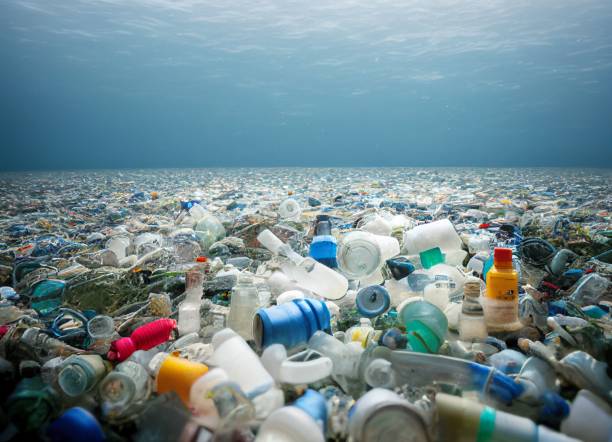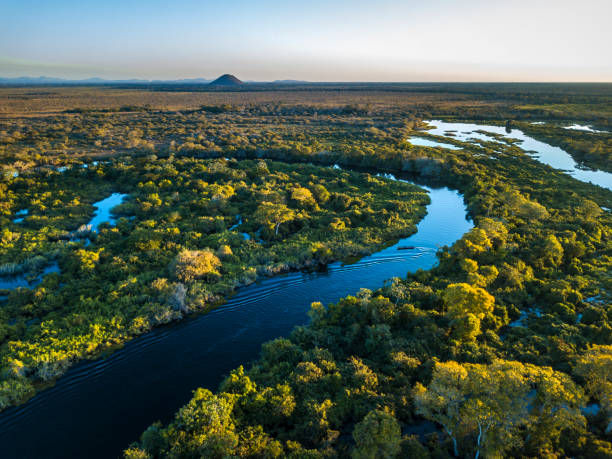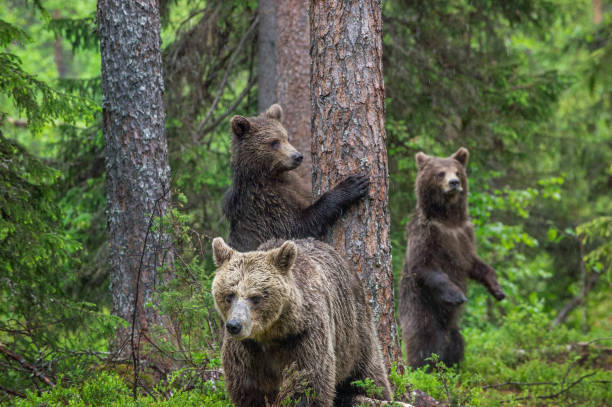Planet in Peril: IPBES Report Reveals Options to Achieve Urgently Needed Transformative Change to Halt Biodiversity Collapse
Focuses on underlying causes of the biodiversity crisis and options for a just and sustainable world. Acting immediately could generate $10 trillion in business opportunity value and support 395 million jobs by 2030.
Windhoek, Namibia, December 18, 2024 – Deep, fundamental shifts in how people view and interact with the natural world are urgently needed to halt and reverse biodiversity loss and safeguard life on Earth, warns a landmark new report by the Intergovernmental Platform on Biodiversity and Ecosystem Services (IPBES).
Contacts: ipbes.media@gmail.com; TerryCollins1@gmail.com or +1 852 579 0534 – Terry Collins & Assoc. | www.tca.tc | @TerryCollinsTC |
The IPBES Assessment Report on the Underlying Causes of Biodiversity Loss and the Determinants of Transformative Change and Options for Achieving the 2050 Vision for Biodiversity – also known as the Transformative Change Report – builds on the 2019 IPBES Global Assessment Report, which found that the only way to achieve global development goals is through transformative change, and on the 2022 IPBES Values Assessment Report.
Prepared over three years by more than 100 leading experts from 42 countries from all regions of the world, the report explains what transformative change is, how it occurs, and how to accelerate it for a just and sustainable world.
“Transformative change for a just and sustainable world is urgent because there is a closing window of opportunity to halt and reverse biodiversity loss and to prevent triggering the potentially irreversible decline and the projected collapse of key ecosystem functions,” said Prof. Karen O’Brien (Norway/USA), co-chair of the assessment with Prof. Arun Agrawal (India & USA) and Prof. Lucas Garibaldi (Argentina). “Under current trends, there is a serious risk of crossing several irreversible biophysical tipping points including die-off of low altitude coral reefs, die back of the Amazon rainforest, and loss of the Greenland and West Antarctic ice sheets. Transformative change is also necessary because most previous and current approaches to conservation, which aim to reform rather than transform systems, have failed to halt or reverse the decline of nature around the world, which has serious repercussions for the global economy and human well-being.”
The cost of delaying actions to halt and reverse biodiversity loss and nature’s decline around the world by even a decade is estimated to be double that of acting now. Acting immediately can also unlock massive business and innovation opportunities through sustainable economic approaches, such as nature-positive economy, ecological economy and Mother-Earth centric economy. Recent estimates are that more than $10 trillion in business opportunity value could be generated and 395 million jobs could be supported globally by 2030.
Approved on Monday in Windhoek, Namibia by the IPBES Plenary, composed of the 147 Governments that are members of IPBES, the report defines transformative change as fundamental system-wide shifts in views – ways of thinking, knowing and seeing; structures – ways of organizing, regulating and governing; and practices – ways of doing, behaving and relating. Current dominant configurations of views, structures and practices perpetuate and reinforce the underlying causes of biodiversity loss and nature’s decline. Transforming them is central to delivering on the global commitments for a just and sustainable world.
“Promoting and accelerating transformative change is essential to meeting the 23 action-oriented targets of the Kunming-Montreal Global Biodiversity Framework by 2030 and four goals of the Kunming-Montreal Global Biodiversity Framework by 2030 and for achieving the 2050 Vision for Biodiversity, which describes a world where all life can thrive,” said Prof. Agrawal. “Transformative change is rarely the outcome of a single event, driver, or actor. It is better understood as changes that each of us can create, and multiple cascading shifts that trigger and reinforce one another, often in unexpected ways.”
The underlying causes of biodiversity loss identified by the report are the disconnection of people from nature and domination over nature and other people; the inequitable concentration of power and wealth; and the prioritization of short-term individual and material gains.
“As complex and challenging as it is to address these underlying causes of biodiversity loss, it is possible,” said Prof. Garibaldi. “History has shown us that societies can transform at immense scale – as they did during the Industrial Revolution. While that era wrought terrible environmental and human costs, it stands as proof that fundamental, system-wide change is achievable, although it occurred over a much longer period of time than is needed for current transformative change for a just and sustainable world. To meet our shared global development goals today means we need to embark on a new transformation – one that urgently conserves and restores our planet’s biodiversity rather than depleting it, while enabling everyone to prosper.”
The authors created and analyzed a database of hundreds of separate case studies of initiatives around the world with transformative potential. Their analysis shows that positive outcomes for diverse economic and environmental indicators can happen in a decade or less. The analysis also demonstrates that initiatives addressing greater numbers of indirect drivers of biodiversity loss and nature’s decline, and those in which diverse actors work together, lead to more positive outcomes for societies, economies and nature.
Principles and Obstacles – The report identifies four principles to guide deliberate transformative change: equity and justice; pluralism and inclusion; respectful and reciprocal human-nature relationships; and adaptive learning and action.
Speaking about the obstacles that prevent transformative change and reinforce the status quo, Prof. O’Brien said: “The impacts of actions and resources devoted to blocking transformative change, for example through lobbying by vested interest groups or corruption, currently overshadow those devoted to the conservation and sustainable use of biodiversity”.
The report also identifies five overarching challenges to transformative change: relations of domination over nature and people, especially those that emerged and were propagated in colonial eras and that persist over time; economic and political inequalities; inadequate policies and unfit institutions; unsustainable consumption and production patterns including individual habits and practices; as well as limited access to clean technologies and uncoordinated knowledge and innovation systems.
“The underlying causes of biodiversity loss and nature’s decline also create inequalities and injustices,” said Prof. Agrawal. “Those who have benefited most from the economic activities associated with damage to nature – in particular, wealthy actors – have more opportunities and resources to create change. Doing so while involving others in balanced decision-making processes can unleash agency as well as resources to create change.”
Five Strategies – Embracing insights and evidence from diverse knowledge systems, disciplines and approaches, the Transformative Change Report highlights five key strategies and associated actions that have complementary and synergistic effects, and which countries and people can pursue to advance deliberate transformative change for global sustainability:
* Conserve, restore and regenerate places of value to people and nature that exemplify biocultural diversity: This includes a focus on places of biocultural diversity – where place-based actions, such as restoration activities, can also support cultural values, sustainable production and biodiversity. An example is the Community Forestry Programme in Nepal – integrating decentralized forest policy into local community needs, views and practices to restore and manage degraded forests.
* Drive systematic change and mainstreaming biodiversity in the sectors most responsible for nature’s decline: The agriculture and livestock, fisheries, forestry, infrastructure and urban development, mining and fossil fuel sectors contribute heavily to the worst outcomes for nature. Transformative approaches such as multifunctional and regenerative land use can promote a variety of benefits for nature and people. “Studies have suggested that increasing biodiversity, protecting natural habitats and reducing external inputs in agricultural landscapes can enhance crop productivity, for instance by enhancing pollinator abundance and diversity,” said Prof. Garibaldi.
* Transform economic systems for nature and equity: Humans derive more than $100 trillion of value from nature annually, yet global public explicit subsidies to sectors driving nature’s decline ranged from $1.4 trillion to $3.3 trillion per year in 2022 and total public funding for environmentally harmful subsidies has increased by 55% since 2021. It is estimated that between $722 billion and $967 billion per year is needed to sustainably manage biodiversity and maintain ecosystem integrity Currently, $135 billion per year is spent on biodiversity conservation, leaving a biodiversity funding gap of $598-824 billion per year. Some of the actions that could be taken to advance the necessary transformations include: internalizing environmental costs and using true cost accounting, reforming subsidies in sectors that contribute to biodiversity loss and nature’s decline, reconsidering global debts, greater positive private sector engagement, establishing sustainability as a core tax principle, and redefining goals, metrics and indicators to acknowledge social (including cultural), economic and environmental dimensions, as well as the different values of nature.
* Transform governance systems to be inclusive, accountable and adaptive: Integrating biodiversity into sector policies and decision-making, engaging a greater diversity of actors and holding actors accountable are important elements in transforming governance systems for more just and sustainable outcomes for people and nature. An example of this kind of approach to governance is the ecosystems-based spatial management of the Galapagos Marine Reserve, which supports sustainable fisheries and tourism – vital for more than 30,000 residents and 300,000 annual visitors.
* Shift views and values to recognize human-nature interconnectedness: Many human behaviours are habitual, learned within social and environmental conditions – and they can be changed. Enhancing the visibility of desired behaviours and supporting these with targeted policy measures can catalyze and sustain new social norms and behaviours. Cultivating feelings of nature-connectedness is also important, as is transformative learning and education, experiential nature-based activities and knowledge co-creation by combining different knowledge systems including Indigenous and local knowledge.
Visions of Transformative Change – Visions are fundamentally important to inspire transformative change. The authors assessed more than 850 separate visions of a sustainable world for nature and people. They find that visions of a better future for humans and nature are abundant, but most do not change the status quo.
approach provides a complete understanding of transformative change or how to achieve it,” said Prof. O’Brien. “Many knowledge systems, including Indigenous and local knowledge, provide complementary insights into how it occurs and how to promote, accelerate and navigate the change needed for a just and sustainable world.”
Indigenous and local knowledge systems offer philosophies, ethics of care and reciprocity, values, and practices to shape approaches to transformative change. These include the use of ancestral, embodied and experiential knowledge and non-human ways of knowing and making sense of the world in decision making for conservation. Visions where Indigenous Peoples and local communities play a meaningful role are found to have a greater likelihood of advancing transformative change.
Visions for living in harmony with nature are more likely to succeed when they emerge from inclusive, rights-based approaches and stakeholder processes and when they incorporate collaboration for change across sectors.
Roles for All – A key message from the report is that there is a role for every person and organization to create transformative change at multiple levels, but that coalitions of actors and actor groups are more effective in pursuing transformative change than change pursued individually. Such coalitions include individual citizens, Indigenous Peoples and local communities, civil society organizations, non-governmental organizations, trade unions, funders, faith-based organizations, governments at all levels, the private sector, financial institutions and the scientific community.
Governments across all levels are found to be key in engaging diverse coalitions of State and non-State actors. Governments are powerful enablers of transformative change when they foster policy coherence, enact and enforce stronger regulations to benefit nature and nature’s contributions to people in policies and plans across different sectors, deploy innovative economic and fiscal tools, phase out or reform environmentally harmful subsidies and promote international cooperation. The report finds that current government actions for transformative change are undermined by a mismatch between the scale of biodiversity challenges and the jurisdiction of separate, siloed institutions or the length of time for policy implementation compared to the length of time between elections that can bring new political authorities to power that oppose such policies.
Civil society plays important and effective roles in bringing about transformative change by mobilizing citizens, creating initiatives that propagate change and by holding governments and the private sector accountable for harmful environmental practices. The report finds that a way to support transformative change is by supporting and amplifying civil society initiatives for a just and sustainable world and protecting environmental defenders from violence and violations of rights.
“We thank the co-chairs and all the authors of the Transformative Change Report for making it clear that there is path to a more just and sustainable world,” said Dr. Anne Larigauderie, Executive Secretary of IPBES. “Acting decisively now to shift views, structures and practices to address the underlying causes of biodiversity loss will be tremendously challenging but is urgent, necessary and possible.”
* * * * *
By the Numbers – Key Statistics from the Report
>50%: Proportion of annual global GDP generated by economic activities moderately to highly dependent on nature, amounting to $58 trillion
$13 trillion: Annual value of industries highly dependent on nature, accounting for 15% of global GDP
$31 trillion: Annual value of industries moderately dependent on nature, representing 37% of global GDP
$10 trillion: Estimated business opportunity value that could be generated while supporting 395 million jobs globally by 2030
55%: Increase in public funding of environmentally harmful subsidies since 2021
$10.7 trillion: Estimated annual external costs of sectors most responsible for nature’s decline
<15%: Global proportion of forests certified as sustainably managed
46,955: Documented environmental threats contested by civil society analyzed by authors
40%: Proportion of protected areas and intact ecosystems across 87 countries managed by or with tenure rights of Indigenous Peoples and local communities
39.2%: Proportion of global wealth held by top 1% of global population in 2021, with 1.85% owned by the bottom 50%
Contacts: ipbes.media@gmail.com
TerryCollins1@gmail.com or +1 852 579 0534 – Terry Collins & Assoc. | www.tca.tc | @TerryCollinsTC |
United Nations journalists – United Nations journalists – United Nations journalists
United Nations News – United Nations News – UN Correspondents Association – UNCA Awards





























